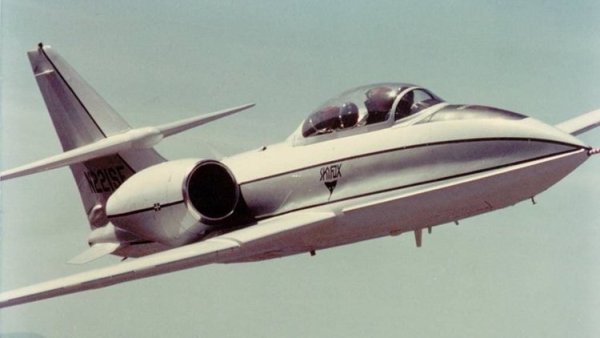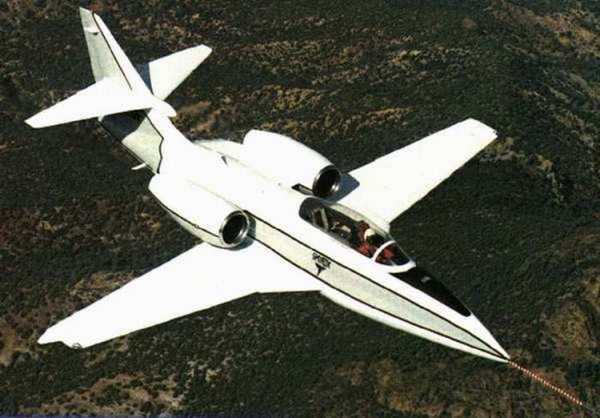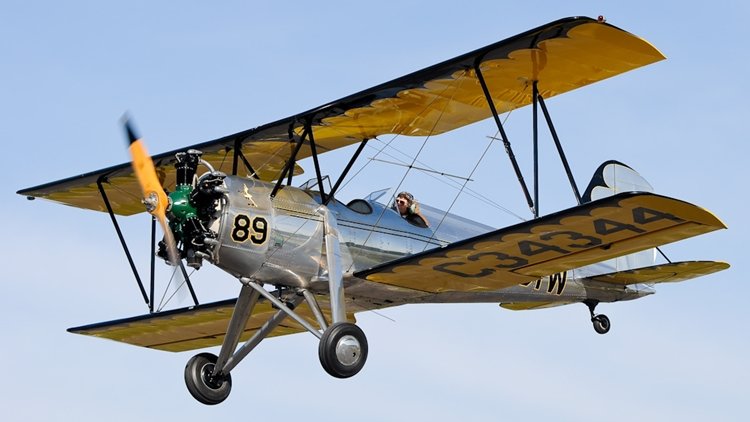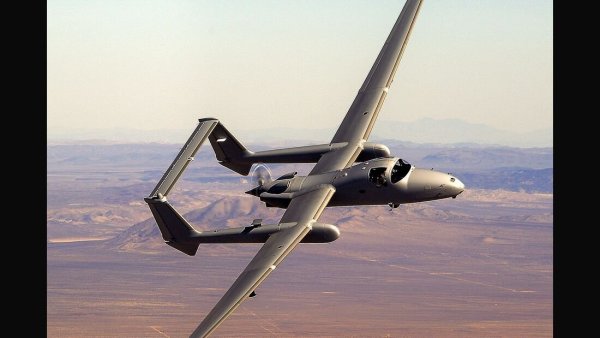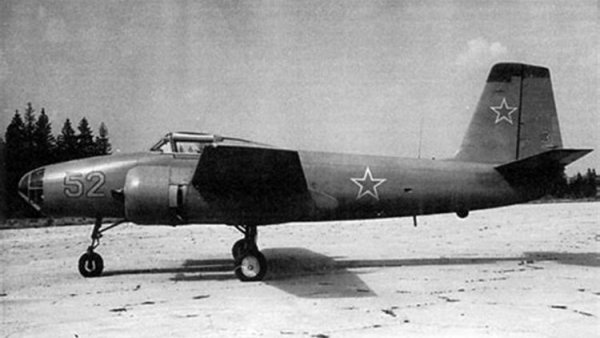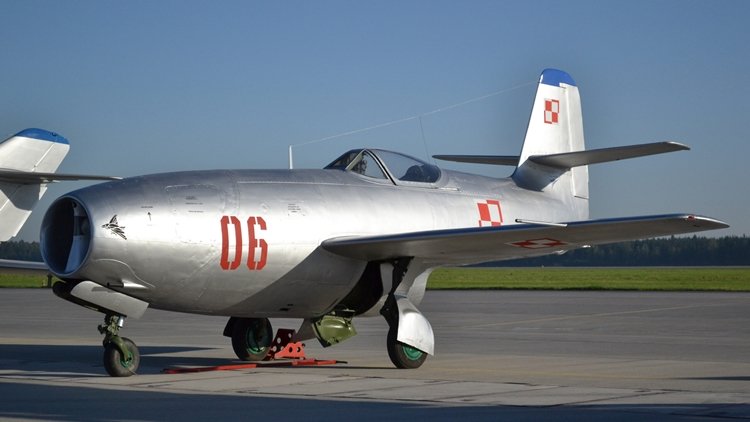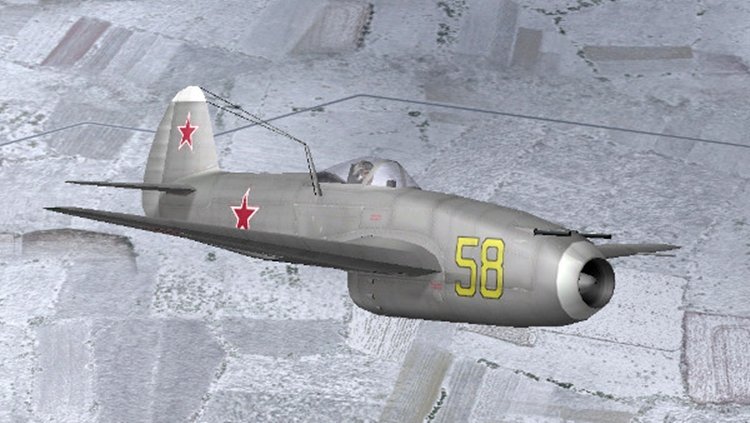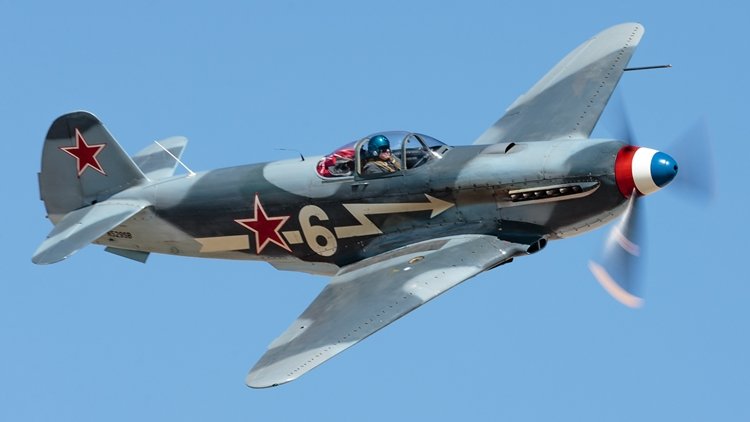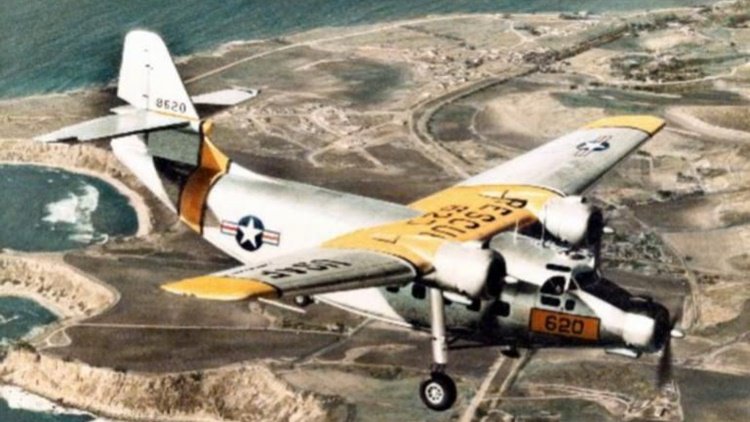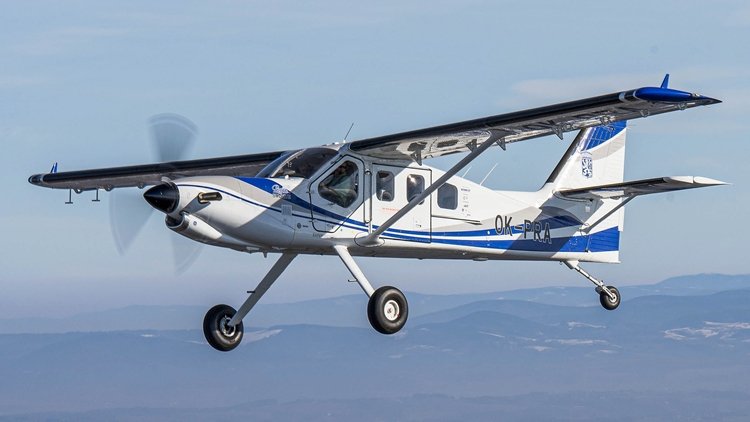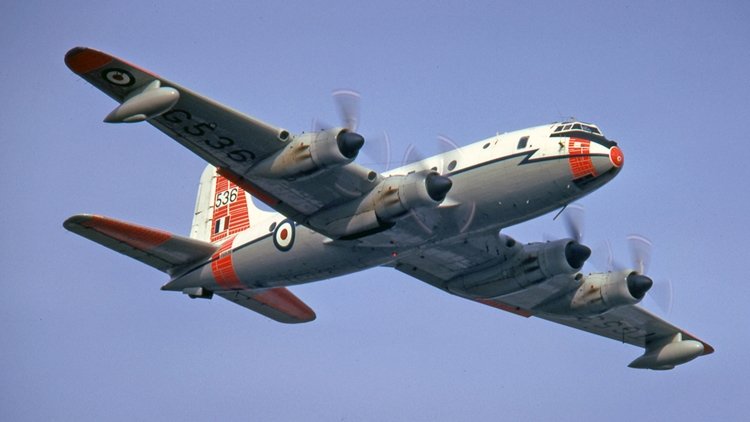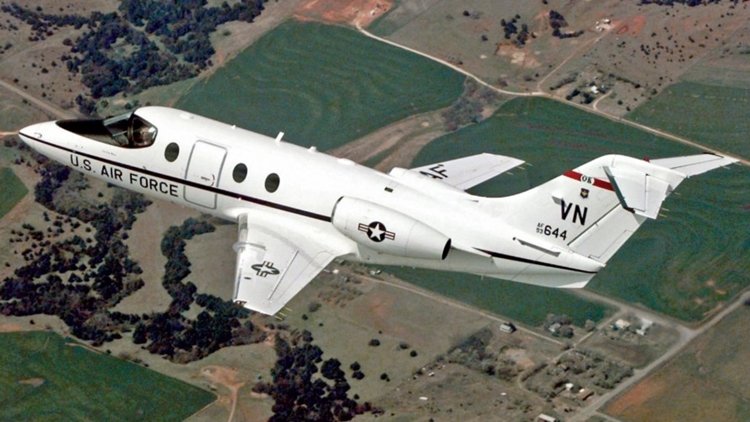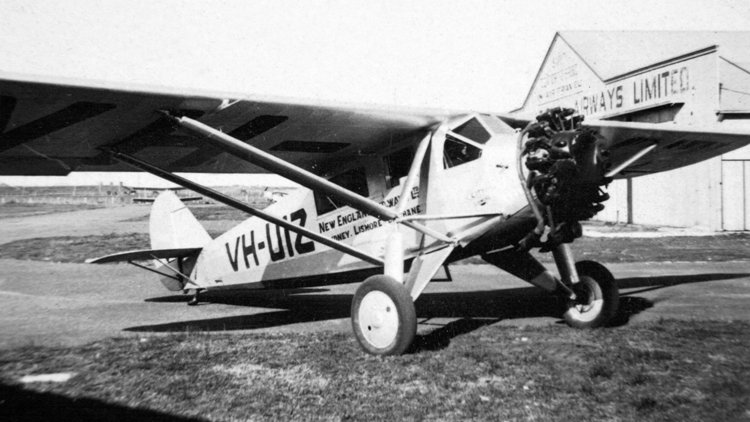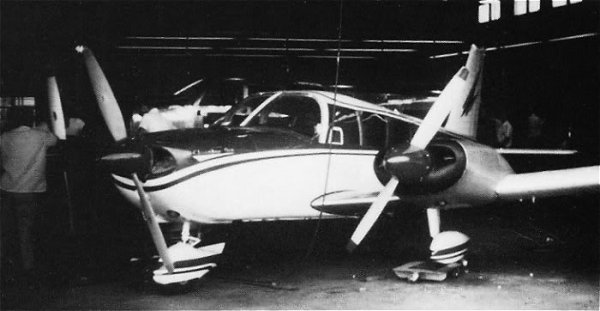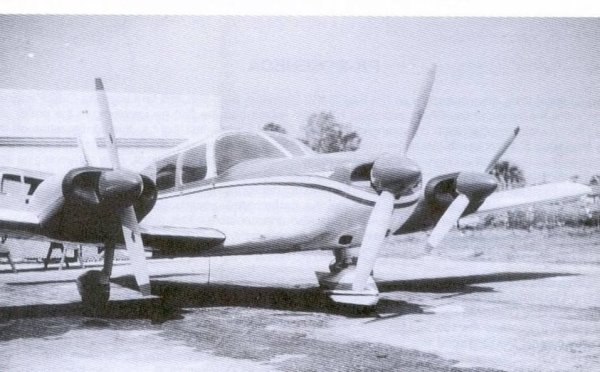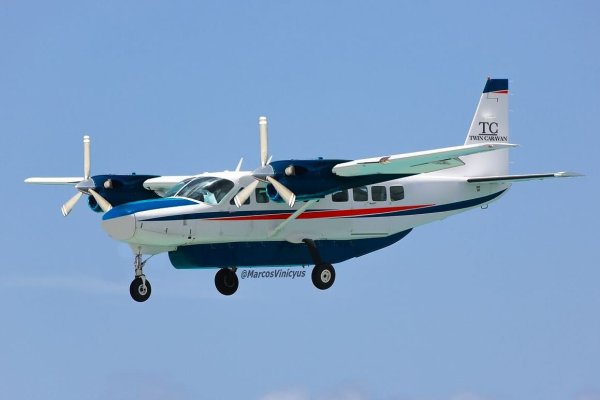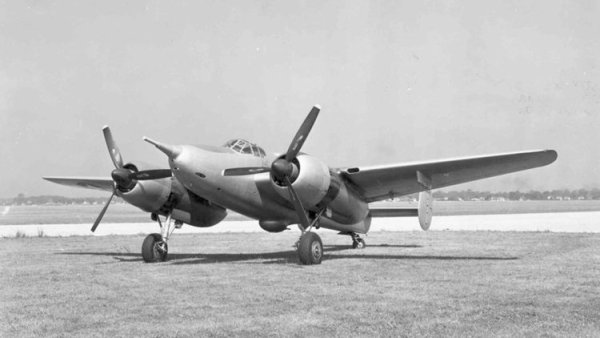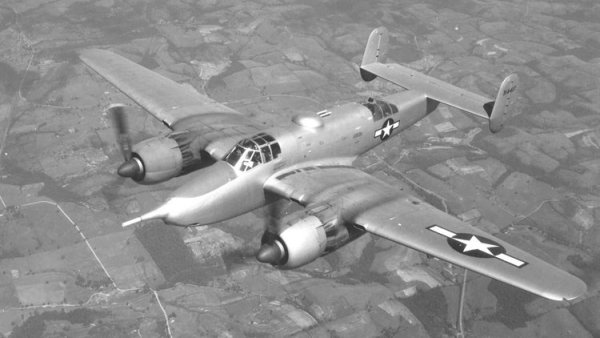-
Posts
7,584 -
Joined
-
Last visited
-
Days Won
67
Content Type
Profiles
Forums
Gallery
Downloads
Blogs
Events
Store
Aircraft
Resources
Tutorials
Articles
Classifieds
Movies
Books
Community Map
Quizzes
Videos Directory
Everything posted by red750
-
The Douglas TBD Devastator was an American torpedo bomber of the United States Navy. Ordered in 1934, it first flew in 1935 and entered service in 1937. At that point, it was the most advanced aircraft flying for the Navy, however by the time of the US entry into World War 2, the TBD was already obsolete. The Devastator performed well early war, most notably in the Battle of Coral Sea, but earned notoriety for a catastrophic performance during the Battle of Midway in which 41 Devastators recorded zero torpedo hits with only six surviving to return to their carriers. Although much of the Devastator's dismal performance was later attributed to the many well-documented defects in the US Mark 13 torpedo, the aircraft was withdrawn from frontline service after Midway, being replaced by the Grumman TBF Avenger. The Douglas XTBD-1 was ordered on 30 June 1934 after being one of the winners of a US Navy competition for new bombers to operate from its aircraft carriers. Other aircraft also ordered for production as a result of the competition included the Brewster SBA, the Vought SB2U Vindicator, and the Northrop BT-1, the last of which would evolve into the Douglas SBD Dauntless. The Great Lakes XB2G, Great Lakes XTBG, Grumman XSBF, Hall XPTBH and Vought XSB3U were also tendered to the specification but were not developed beyond prototype status. The XTBD Devastator flew for the first time on 15 April 1935 while marking a number of "firsts" for the US Navy. It was the first American carrier-based monoplane to be widely used, the first all-metal naval aircraft, the first with a completely enclosed cockpit, the first with power-actuated (hydraulically) folding wings A semi-retractable landing gear was fitted, with the wheels protruding 10 in (250 mm) below the wings to potentially limit damage to the aircraft in a "wheels-up" landing. A crew of three was normally carried beneath a large "greenhouse" canopy almost half the length of the aircraft. The pilot sat in front; a rear gunner/radio operator took the rearmost position, while the bombardier occupied the middle seat. During a bombing run, the bombardier lay prone, sliding into position under the pilot to sight through a window in the bottom of the fuselage, using the Norden bombsight. 130 Devastators were built Fore more details of design and development, operational history and variants, click here.
-
🤣🤣👏👏 @iconicflightllc We all know it… Pilots daydreams about being an... WWW.FACEBOOK.COM 🤣🤣👏👏 @iconicflightllc We all know it… Pilots daydreams about being an ICON A5 pilot.✈️ Video from YouTube kevin409galv #ICONA5 #ICONAircraft #LightSportAircraft #LSA #SeaplaneLife...
-
The Boeing Skyfox is an American twin-engined jet trainer aircraft, a highly upgraded development of the Lockheed T-33. It was designed as a primary trainer to compete with and replace the Cessna T-37 Tweet. Besides its primary role as a trainer, the aircraft was envisioned to have other roles as well, including ground attack. The program was started by the Skyfox Corporation in 1983, and was acquired by Boeing in 1986. The program included the replacement of the Allison J33-A-35 turbojet by two Garrett TFE731-3A turbofans. It also included an extensive redesign of the airframe. Only one prototype aircraft was built, and the program was later canceled due to lack of customers.
-
The Northrop A-17, also known as the Northrop Model 8, a development of the Northrop Gamma 2F model, was a two-seat, single-engine, monoplane, attack bomber built in 1935 by the Northrop Corporation for the United States Army Air Corps. When in British Commonwealth service during World War II, the A-17 was called Nomad. The Northrop Gamma 2F was an attack bomber derivative of the Northrop Gamma transport aircraft, developed in parallel with the Northrop Gamma 2C, designated the YA-13 and XA-16. The Gamma 2F had a revised tail, cockpit canopy and wing flaps compared with the Gamma 2C, and was fitted with new semi-retractable landing gear. It was delivered to the United States Army Air Corps for tests on 6 October 1934, and after modifications which included fitting with a conventional fixed landing gear, was accepted by the Air Corps. A total of 110 aircraft were ordered as the A-17 in 1935. The resulting A-17 was equipped with perforated flaps, and had a fixed landing gear with partial fairings. It was fitted with an internal fuselage bomb bay, that carried fragmentation bombs, and external bomb racks. Northrop developed a new landing gear, this time completely retractable, producing the A-17A variant. This version was again purchased by the Army Air Corps, who placed orders for 129 aircraft. By the time these were delivered, the Northrop Corporation had been taken over by Douglas Aircraft Company, with export models being known as the Douglas Model 8. For operational history in 10 countries and details of 11 variants, click here.
-
The Meyers OTW (Out To Win) was a 1930s United States training biplane designed by Allen Meyers and built by his Meyers Aircraft Company from 1936 to 1944. In anticipation for a demand for training aircraft caused by the introduction of a civilian war training scheme (in which civil flying schools would provide primary training for the military), Allen Meyers designed the OTW and formed the Meyers Aircraft Company to build it. The OTW was a conventional biplane with tandem seating for two in open cockpits and a fixed tailwheel landing gear. The prototype was powered by a 125 hp (93 kW) Warner Scarab engine and it first flew on 10 May 1936. The aircraft was produced in two main variants; the OTW-145 powered by a 145 hp (108 kW) Warner Super Scarab, and the OTW-160 powered by a 160 hp (119 kW) Kinner R-5 engine. A total of 102 were built. Variants OTW-125 Production variant with 125hp (93kW) Warner Scarab engine. OTW-145 Production variant with 145hp (108kW) Warner Super Scarab engine. OTW-160 (Specifications below) Final production variant with 160hp (119kW) Kinner R-5 engine. OTW-KR One aircraft was re-engined with a 120hp (89kW) Ken-Royce 7G engine.
-
The Northrop Grumman Firebird is an intelligence gathering aircraft designed by Northrop Grumman's subsidiary Scaled Composites which can be flown remotely or by a pilot. At Scaled, it is known as the Model 355. It was unveiled on May 9, 2011. It was first flown in February 2010 and is considered to be an optionally piloted vehicle (OPV). In April 2022, Northrop Grumman announced it had suspended production of the Firebird, having failed to secure any export customers for the aircraft. However, company representatives left open the possibility of future production, stating that the aircraft would "remain available for interested customers." Only one had been built.
-

Cessna only just makes it to Bankstown 26/05/2024
red750 replied to kgwilson's topic in Aircraft Incidents and Accidents
From regosearch: Cessna 210MTurbo VH-MYW. Holder: SWANEPOEL, Johannes Jacob. -
The Yakovlev Yak-200 was a prototype Soviet multi-engine trainer built during the 1950s. A modified version was built as the Yak-210 for navigator training, but only one example of each was built before the program was cancelled in 1956.
-
The Yakovlev Yak-17 (Russian: Яковлев Як-17; USAF/DOD designation Type 16, NATO reporting name Feather) was an early Soviet jet fighter. It was developed from the Yak-15, the primary difference being tricycle landing gear. The trainer version, known as the Yak-17UTI (NATO reporting name Magnet), was the only Soviet jet trainer of the 1940s. Both aircraft were exported in small numbers and the Yak-17 was soon replaced by the far superior Mikoyan-Gurevich MiG-15 beginning in 1950. After the state acceptance trials of the Yak-15 in May 1947 recommended that the aircraft be modified with a tricycle landing gear more suitable for jet-powered aircraft, the Yakovlev design bureau began design of the Yak-15U or Yak-15U-RD-10 (uloochshenny - improved). The main gear had to be redesigned to place the wheels behind the aircraft's center of gravity. The main gear was moved behind the front spar, and when retracted filled most of the space between the spars. This caused a major redesign of the fuel tanks and reduced their capacity to just 680 liters (150 gallons). This necessitated the addition of two 200-liter (44 imp gal; 53 U.S. gal) drop tanks, which hung under the tip of each wing. The addition of the tip tanks required a redesign of the structure of the wing so that the aircraft could still maintain a load bearing of 12g. The vertical stabilizer was enlarged and a periscope was also added above the windscreen on most series aircraft. Armament, systems, and equipment were virtually unchanged. Production began in 1948. Total production of all Yak-15 and Yak-17 variants was 717. The Yak-17 was first publicly displayed at the Soviet Aviation Day of 1949, at Tushino Airfield. In operation, the Yak-17 had most of the same faults as its predecessor, including relatively low speed and range, and an unreliable engine (still based upon the German Junkers Jumo 004) with a complicated starting procedure. On the other hand, its handling was very simple, and similar to popular propeller fighters such as the Yak-3 and Yak-9. This made it an excellent transitional machine to jet fighters. As a result, the trainer version Yak-17UTI accounted for the majority of production, and almost all series-built Yak-17s were of this tandem, dual-control trainer version, which filled an important need in all Soviet air arms. Surviving Yak-17s can be viewed at the Central Air Force Museum at Monino, outside of Moscow and the Prague Aviation Museum at Kbely Airport, near Prague, Czech Republic. Surviving Yak-17UTIs include one example at the Polish Aviation Museum in Kraków and the Chinese Aviation Museum, near Beijing. Variants Yak-15U (Yak-15U-RD-10): Improved Yak-15 with tricycle undercarriage and drop tanks, became the prototype of the Yak-17 proper. UTI Yak-17-RD10 (Yak-21T): (No relation to the earlier Yak-17-RD10) Two-seat trainer version of the Yak-15U with long greenhouse canopy over tandem cockpits and tricycle undercarriage. Yak-21T: (T for Tryokhkolyosnoye shassee - "tricycle undercarriage") Alternative designation of the UTI Yak-17-RD10. Unrelated to the earlier Yak-21. Yak-17: Production fighters with tricycle undercarriage. Yak-17UTI: The most-produced variant of the Yak-17, the Yak-17UTI was a tandem-seat, dual-control trainer. Fuel capacity was greatly reduced, owing to the elimination of the wingtip tanks. Initially it was planned to include a single UBS machine gun, but this was omitted on series-produced aircraft. In the U.S., this aircraft was known as the "Type 26", and given the ASCC reporting name "Magnet". Yak-17UTI
-
The Yakovlev Yak-15 (Russian: Яковлев Як-15; NATO reporting name: Feather, USAF/DOD designation Type 2) was a first-generation Soviet turbojet fighter developed by the Yakovlev design bureau (OKB) immediately after World War II. The main fuselage was that of Yakovlev Yak-3 piston-engine fighter modified to mount a reverse-engineered German Junkers Jumo 004 engine. The Yak-15 and the Swedish Saab 21R were the only two jets to be successfully converted from piston-power to enter production. 280 aircraft were built in 1947. Although nominally a fighter, it was mainly used to qualify piston-engine-experienced pilots to fly jets. Development and description On 9 April 1945, the Council of People's Commissars ordered the Yakovlev OKB to develop a single-seat jet fighter to be equipped with a single German Jumo 004 engine. To save time, Yakovlev based the new design (known as the Yak-3-Jumo or Yak-Jumo) on the latest version of his successful Yakovlev Yak-3 piston-engined fighter. The piston engine was removed and the jet engine was mounted underneath the forward fuselage so that its exhaust exited underneath the middle of the fuselage. To protect the fuselage, a steel heatshield was added to its bottom. The deeper forward part of the fuselage caused the configuration of the aircraft to resemble a "pod-and-boom". Very few changes were made to the metal fuselage other than at the aircraft's nose. This was recontoured to accommodate the armament of two 23-millimeter (0.91 in) Nudelman-Suranov NS-23 autocannon, an additional fuel tank above the engine and the engine itself. No changes were made to the wings other than the elimination of the air intakes for the oil cooler and the bending of the front wing spar into an inverted U-shape to clear the engine. The vertical stabilizer was slightly enlarged, but the tailplane was unmodified. The conventional landing gear was also unmodified other than the tailwheel which now used several steel leaf springs as shock absorbers. The Yak-Jumo carried a total of 590 kilograms (1,300 lb) of fuel. Taxi tests began in October 1945, but the heatshield proved to be too short and the heat from the engine exhaust melted the duralumin skin of the rear fuselage as well as the rubber tire of the tailwheel. Modifications to rectify the problems took until late December. By this time a second prototype had been completed with a solid steel tailwheel and an enlarged tailplane. After a few taxiing tests, it was transferred to the Central Aerohydrodynamic Institute (TsAGI) for full-scale windtunnel testing that lasted until February 1946. On the 26th of that month, the Council of People's Commissars issued requirements that the aircraft should have a maximum speed of 770 km/h (480 mph) at sea level and a speed of 850 km/h (530 mph) at an altitude of 5,000 meters (16,400 ft). It should be able to climb to that altitude in 4+1⁄2 minutes or less and it should have a range of 500 kilometers (310 mi) at 90% of maximum speed. Two prototypes were to be ready for flight testing on 1 September. A total of 280 units were built. For further details on development and design, and variants, click here.
-
The Yakovlev Yak-3 (Russian: Яковлев Як-3) was a single-engine, single-seat World War II Soviet fighter. Robust and easy to maintain, it was much liked by both pilots and ground crew. One of the smallest and lightest combat fighters fielded by any combatant during the war, its high power-to-weight ratio gave it excellent performance and it proved to be a formidable dogfighter. The origins of the Yak-3 went back to 1941 when the I-30 prototype was offered along with the I-26 (Yak-1) as an alternative design. The I-30, powered by a Klimov M-105P engine, was of all-metal construction, using a wing with dihedral on the outer panels. Like the early Yak-1, it had a 20 mm (0.79 in) ShVAK cannon firing through the hollow-driveshaft nose spinner as a motornaya pushka (моторная пушка - Literally: 'Motor Cannon'), twin 7.62 mm (0.300 in) synchronized ShKAS machine guns in cowling mounts and a ShVAK cannon in each wing. During the Battle of Stalingrad, Luftwaffe fighters exhibited significant speed, climb rate, and armament advantages over those of the VVS. The Yak-1 then in service was understood to be in urgent need of a modernization were it to fight on equal footing against the latest models of German fighters, as well as better energy retention and higher firepower. Then, in 1943, a group of designers headed by Alexander Sergeyevich Yakovlev designed the Yak-3, a further development of the proven Yak-1 aimed at improving survivability, flight characteristics and firepower, which required a lower weight, a higher-power engine and therefore, faster speed. The first of two prototypes had a slatted wing to improve handling and short-field performance while the second prototype had a wooden wing without slats in order to simplify production and save aluminium. The second prototype crashed during flight tests and was written off. Although there were plans to put the Yak-3 into production, the scarcity of aviation aluminium and the pressure of the Nazi invasion led to work on the first Yak-3 being abandoned in late 1941. In between 1942 and 1943, Yakovlev built the Yak-1M, a prototype that would ultimately lead to the Yak-3, coupled with the VK-105PF2, the latest iteration of the VK-105 engine family, where "P" indicated support for a motornaya pushka - an autocannon that fires between the engine banks, through the hollow propeller shaft - mounting. It incorporated a wing of similar design but with smaller surface area (17.15 to 14.85 m2 (184.6 to 159.8 sq ft)), and had further aerodynamic refinements, like the new placement of the oil radiator, from the chin to the wing roots (one of the visual differences with the Yak-1, -7, -9). A second Yak-1M (originally meant as a "backup") prototype was constructed later that year, differing from the first aircraft in that it had plywood instead of fabric covering of the rear fuselage, mastless radio antenna, reflector gunsight and improved armour and engine cooling. A total of 4,848 were built. For more details of development, operational history and variants, click here.
-
The Northrop YC-125 Raider was a 1940s American three-engined STOL utility transport built by Northrop Corporation, Hawthorne, California. Northrop's first postwar civil design was a three-engined STOL passenger and cargo transport named the Northrop N-23 Pioneer, which was intended to replace the Ford Trimotors of the Central American airline Transportes Aéreos Centro Americanos (TACA). The Pioneer could carry 36 passengers or cargo, with a cargo door and a "chin" hatch allowing the loading of 36 ft (11 m) lengths of pipes or timber into the aircraft's cabin. It first flew on 21 December 1946. The aircraft had good performance, resulting in an order of 40 aircraft from TACA, but political manoeuvring from Pan-Am after the shipping company Waterman Steamship Corporation purchased a major stake in TACA led to TACA losing rights to operate to or from the United States, which in turn caused TACA to cancel its order for the Pioneer. Despite extensive sales tours, no further orders were obtained. The Pioneer was lost in a fatal crash on 19 February 1948 when it lost a new tailfin design in flight. In 1948, the United States Air Force expressed interest in an aircraft of the same configuration and placed an order with Northrop for 23 aircraft, 13 troop transports designated the C-125A Raider and 10 for Arctic rescue work designated the C-125B. With the company designation N-32 Raider the first aircraft flew on 1 August 1949. The aircraft was powered by three 1,200 hp (890 kW) Wright R-1820-99 Cyclone radial engines. The aircraft could also be fitted with JATO rockets that enabled it to take off in less than 500 feet (150 m). The 13 troop transporters were designated YC-125A in-service and the Arctic rescue version the YC-125B. The Canadian company Canadair considered building the N-23 under licence but did not proceed. Deliveries of the YC-125 to the USAF began in 1950. These aircraft did not serve long as they were underpowered and they were soon sent to Sheppard Air Force Base, Texas and relegated to be ground instructional trainers until retired in 1955 and declared surplus. Most of the surplus aircraft were purchased by Frank Ambrose and sold to bush operators in South and Central America. Variants N-23 Pioneer Prototype three-engined STOL transport, one built. N-32 Raider Company designation of military version of the N-23. YC-125A Raider N-32 with seats for thirty troops, 13 built. YC-125B Raider (Specifications below) Arctic rescue version of the N-32 with twenty stretchers and provision for a ski undercarriage. Ten built (serials 48-618/627). CL-3 Proposed Canadair licensed produced variant from 1949, with 3 x Canadian Pratt & Whitney R-1820 engines. Was redesignated CL-12 in the same year. Project was dropped sometime around early 1950.[citation needed] N-74 Another proposed Canadair variant. Improvements including the replacement of the three engines with two Allison T56 turboprops were studied. Project abandoned in the early 1950s.
-
The Northrop Alpha is an American single-engine, all-metal, seven-seat, low-wing monoplane fast mail/passenger transport aircraft used in the 1930s. Design work was done at the Avion Corporation, which in 1929, became the Northrop Aircraft Corporation based in Burbank, California. Drawing on his experience with the Lockheed Vega, John K. Northrop designed an advanced mail/passenger transport aircraft. In addition to all-metal construction, the new Alpha benefitted from two revolutionary aerodynamic advancements: wing fillets researched at the Guggenheim Aeronautical Laboratory at the California Institute of Technology, and a multicellular stressed-skin wing of Northrop's own design which was later successfully used on the Douglas DC-2 and Douglas DC-3. In addition, the Alpha was the first commercial aircraft to use rubber deicer boots on wing and empennage leading edges which, in conjunction with state-of-the-art radio navigation equipment, gave it day or night, all-weather capability. The aircraft first flew in 1930, with a total of 17 built. The Alpha was further developed into a dedicated fast transport, the Northrop Gamma. The Alpha entered service with Transcontinental & Western Air (TWA) making its inaugural flight on April 20, 1931. The trip from San Francisco to New York required 13 stops and took just over 23 hours. TWA operated 14 aircraft until 1935, flying routes with stops in San Francisco, California; Winslow, Arizona; Albuquerque, New Mexico; Amarillo, Texas; Wichita, Kansas; Kansas City, Missouri; St. Louis, Missouri; Terre Haute, Indiana; Indianapolis, Indiana; Columbus, Ohio; Pittsburgh, Pennsylvania; Philadelphia, Pennsylvania; and New York. Three Alphas were operated by the US military as C-19 VIP transports until 1939. TWA's were initially operated as a passenger service but the Alpha's were later modified at the Stearman factory in Wichita into the cargo-carrying 4A model with a new type certificate. Stearman and Northrop had the same parent company at the time. The third Alpha built, NC11Y, was reacquired by TWA in 1975, and is preserved at the Smithsonian National Air and Space Museum. Variants Alpha 2 six-passenger version Alpha 3 two-passenger plus cargo version, several Alpha 2s were converted to this configuration Alpha 4 cargo version with 2 ft (0.6 m) increased wingspan and large metal fairings encapsulating the main gear for drag reduction. All were converted from Alpha 3s Alpha 4A cargo version, all converted from Alpha 4s YC-19 & Y1C-19 military VIP transport, seating reduced to four passengers, serial numbers 31–516 to 31-518,[3] YC-19 had a Pratt & Whitney R-1340-7, while the Y1C-19s had the R-1340-11 engine
-
The PRAGA AVIA SM-92TE Praga Alfa is an multi-purpose single engine high wing all-metal turboprop aircraft with fixed landing gear according to EASA CS-23 and FAA FAR-23 rules. The aircraft with unpressurised cabin can accomodate up to 7 persons (adults persons „large“ European type) including a minimum crew of one. The aircraft is conceptually designed to satisfy the requirements for easy operation and maintenance service, including service in the difficult climatic conditions of the arctic circle or in the desert. The aircraft is equipped with a large sliding side door, which enables considerably more efficient operation of the airplane. Applications include Crop Spraying Special Application Photogrammetric works Agricultural aerial work Pilot Training Monitoring flights Glider and Banner towing Amphibian
-
All items marked SOLD have been removed. It would make it easier, and avoid possible deletion in error, if advertisers, as well as adding SOLD to title of advert, to also add a comment advising date of sale. This will avoid confusion with other edits you may make, such as changing price. Your ID will show on comment as confirmation. Thank you. red750 (Moderator).
-
The Handley Page HP.67 Hastings is a retired British troop-carrier and freight transport aircraft designed and manufactured by aviation company Handley Page for the Royal Air Force (RAF). Upon its introduction to service during September 1948, the Hastings was the largest transport plane ever designed for the service. Development of the Hastings had been initiated during the Second World War in response to Air Staff Specification C.3/44, which sought a new large four-engined transport aircraft for the RAF. Early on, development of a civil-oriented derivative had been prioritised by the company, but this direction was reversed following an accident. On 7 May 1946, the first prototype conducted its maiden flight; testing revealed some unfavourable flight characteristics, which were successfully addressed via tail modifications. The type was rushed into service so that it could participate in the Berlin Airlift; reportedly, the fleet of 32 Hastings to be deployed during the RAF operation delivered a combined total of 55,000 tons (49,900 tonnes) of supplies to the city, As the RAF's Hastings fleet expanded during the late 1940s and early 1950s, it supplemented and eventually replaced the wartime Avro York, a transport derivative of the famed Avro Lancaster bomber. RAF Transport Command operated the Hastings as the RAF's standard long-range transport; as a logistics platform, it contributed heavily during conflicts such as the Suez Crisis and the Indonesian Confrontation. A handful were also procured by the Royal New Zealand Air Force (RNZAF) to meet its transport needs. Beyond its use as a transport, several Hastings were modified to perform weather forecasting, training, and VIP duties. A civilian version of the Hastings, the Handley Page Hermes, was also produced, which only achieved limited sales. Hastings continued to be heavily used by RAF up until the late 1960s, the fleet being withdrawn in its entirety during 1977. The type was succeeded by various turboprop-powered designs, including the Bristol Britannia and the American-built Lockheed Hercules. The Handley Page Hastings was a large purpose-built four-engine transport aircraft. It was furnished with several modern features, such as a Messier-built fully retractable undercarriage, which was operated hydraulically, and unprecedented stowage space for an RAF transport aircraft. Roughly 3,000 cubic feet of unrestricted area was used to house various cargoes or passengers. The cabin was fitted with a Plymax floor, complete with various grooves, channels, and lashing points for securing goods of varying sizes, while the walls were sound proofed and lined with plywood for increased comfort. Principal access is provided by a freight door on the port side, which incorporates a paratroop door, while a second paratroop door is present on the starboard side; on the ground, a rapidly deployable ramp suitable for road vehicles can also be used. In service, the aircraft was typically operated by a crew of five; it could accommodate either up to 30 paratroopers, 32 stretchers and 28 sitting casualties, or a maximum of 50 fully equipped troops. For more details of development, design operational istory and variants, click here.
-
The HAL HF-24 Marut ("Spirit of the Tempest") was an Indian jet fighter aircraft developed and manufactured by Hindustan Aeronautics Limited (HAL) during the 1960s and early 70s. The Marut was designed by the German aeronautical engineer Kurt Tank, with the Project Engineer being George William Benjamin. The aircraft was the first Indian-developed jet fighter and the first in Asia, outside the Soviet Union, to go beyond the test phase and into serial production and active service. On 17 June 1961, the type conducted its maiden flight; on 1 April 1967, the first production Marut was officially delivered to the IAF. While the Marut had been envisioned as a supersonic-capable interceptor aircraft, it would never manage to exceed Mach 1. This limitation was principally due to the engines used, which in turn had been limited by various political and economic factors; multiple attempts to develop improved engines or to source alternative powerplants were fruitless. The Marut's cost and lack of capability in comparison to contemporary aircraft were often criticised. Nevertheless, the Marut performed relatively well in combat, primarily as a fighter-bomber in the ground attack role. Most notably participating in the Battle of Longewala during the Indo-Pakistani War of 1971. A total of 147 Maruts were manufactured, with the Indian Air Force (IAF) being the sole operator. By 1982, the Marut was becoming increasingly obsolescent, and was gradually phased out during the late 1980s. During the 1950s, Hindustan Aircraft Limited (HAL) had developed and produced several types of trainer aircraft, such as the HAL HT-2. However, elements within the firm were eager to expand into the then-new realm of supersonic fighter aircraft. Around the same time, the Indian government was in the process of formulating a new Air Staff Requirement for a Mach 2-capable combat aircraft to equip the Indian Air Force (IAF). However, as HAL lacked the necessary experience in both developing and manufacturing frontline combat fighters, it was clear that external guidance would be invaluable; this assistance was embodied by Kurt Tank. In 1956, HAL formally began design work on the supersonic fighter project. The Indian government, led by Jawaharlal Nehru, authorised the development of the aircraft, stating that it would aid in the development of a modern aircraft industry in India. The first phase of the project sought to develop an airframe suitable for travelling at supersonic speeds, and able to effectively perform combat missions as a fighter aircraft, while the second phase sought to domestically design and produce an engine capable of propelling the aircraft. Early on, there was an explicit adherence to satisfying the IAF's requirements for a capable fighter bomber; attributes such as a twin-engine configuration and a speed of Mach 1.4 to 1.5 were quickly emphasised. During development, HAL designed and constructed a full-scale two-seat wooden glider to act as a flying demonstrator. Designated HAL X-241, this replicated production aircraft in terms of dimensions, control configuration, and aerofoil sections. The wheel brakes, air brakes, flaps, and retractable undercarriage were all actuated using compressed gas, with sufficient gas storage aboard for multiple actuations per flight. On 3 April 1959, the X-241 flew for the first time, after being towed into the air by a Douglas Dakota Mk.IV (BJ 449). A total of 86 flights were conducted prior to the X-241 sustaining considerable damage in a landing incident , when the nose undercarriage failed to extend. On 24 June 1961, the prototype Marut conducted its first powered flight. It was fitted with the same UK-manufactured Bristol Siddeley Orpheus 703 turbojets that were installed in the Folland Gnat airframes that were already being manufactured, under license, by HAL. While the Marut had been designed around significantly more powerful engines, the un-reheated Orpheus 703 was a viable powerplant for testing purposes. This meant that the Marut was barely capable of Mach 1, even though a top speed of Mach 2 had originally been considered necessary. Before suitable, afterburning engines had been obtained, the Indian Government decided to order 16 pre-production and 60 production Maruts, powered by the Orpheus 703. For more details of development, operational history and variants, click here.
-
The Raytheon T-1 Jayhawk is a twin-engined jet aircraft used by the United States Air Force for advanced pilot training. T-1A students go on to fly airlift and tanker aircraft. The T-400 is a similar version for the Japan Air Self-Defense Force. The T-1A Jayhawk is a medium-range, twin-engine jet trainer used in the advanced phase of Air Force Joint Specialized Undergraduate Pilot Training for students selected to fly strategic/tactical airlift or tanker aircraft. It is used also for training Air Force Combat Systems Officers in high and low level flight procedures during the advanced phase of training. It also augmented or served in lieu of the T-39 Sabreliner in the Intermediate phase of US Navy/Marine Corps Student Naval Flight Officer training until the joint Air Force-Navy/Marine Corps training pipeline split in 2010 and now remains solely in operation with the U.S. Air Force, leaving the Navy with the Sabreliner pending its eventual replacement. The T-1 Jayhawk shares the same letter and number as the long retired T-1 SeaStar under the 1962 United States Tri-Service aircraft designation system. The swept-wing T-1A is a military version of the Beechjet/Hawker 400A. It has cockpit seating for an instructor and two students and is powered by twin turbofan engines capable of an operating speed of Mach .78. The T-1A differs from its commercial counterpart with structural enhancements that provide for a large number of landings per flight hour, increased bird strike resistance and an additional fuselage fuel tank. A total of 180 T-1 trainers were delivered between 1992 and 1997. The first T-1A was delivered to Reese Air Force Base, Texas, in January 1992, and student training began in 1993. Another military variant is the Japan Air Self-Defense Force T-400 (400T) trainer, which shares the same type certificate as the T-1A. Variants T-1A United States military designation for trainer powered by two JT15D-5B turbofans, 180 built. T-400 Japanese military designation for the Model 400T powered by two JT15D-5F turbofans, also known by the project name TX; 13 built.
-
The Ryan Brougham was a small single-engine airliner produced in the United States in the late 1920s and early 1930s. Its design was reminiscent of the M-1 mailplane first produced by Ryan in 1926, and like it, was a high-wing, strut-braced monoplane of conventional design. The plane was named by Tom Mathews after Henry Brougham, 1st Baron Brougham and Vaux, designer of the Brougham (carriage). Unlike the M-1, the Brougham had a fully enclosed cabin for the pilot and four passengers. The Brougham prototype was derived from the later M-2 and was powered by a 150 hp Hispano-Suiza 8 water cooled inline V8 engine. Originally priced at $12,200, the price was reduced to $9,700 when fitted with a Wright J-5, and $5,750 with Hispano. One Brougham was fitted with floats. The only common parts shared with the famous Spirit of St. Louis and the first Ryan B-1s were the tail surfaces and a few of the wing fittings. Later B-1 Brougham production versions shared no common parts. Welded Chrome moly steel tubing was used to make the fuselage. Wood was used for the wing, but did not have and dihedral or angle of incidence. The first production B-1 Brougham was The Gold Bug, flown by Frank Hawks. It was preceded by three Hisso Broughams. Charles Lindbergh had come to the factory to examine that first B-1, but had instead ordered a completely new aircraft to his specifications. He used the Ryan NYP Spirit of St. Louis on his record-breaking transatlantic flight of 1927. Hawks renamed his B-1 "Spirit of San Diego" and flew to Washington with his wife to greet the triumphant Lindbergh. In the ensuing glare of publicity, Hawks was hired by the Ryan Aircraft company to be its official representative. With the public idolizing Lindbergh, Hawks toured the country, selling rides in the aircraft "like Lindy flew." His Spirit was actually painted gold, but looked the part to the public. Another reason for the success of the Brougham was its performance at the 1927 National Air Races in Spokane, Washington where Hawks, who had obtained a contract with Maxwell House Coffee, with the now renamed "Miss Maxwell House" came in first for speed in the Detroit news Air Transport Speed and Efficiency Trophy Race. Later, at the 1928 Ford Tudor Reliability Trial and Air Tour, Hawks placed sixth in "Miss Maxwell House". Hawks popularized the type, which stimulated demand among small airlines and charter operators. The Brougham not only sold well in the domestic market, but was exported to China, Guatemala, Mexico and Salvador. Production peaked at 20 per month but was eventually halted by worsening economic conditions in the United States that led to the sale of the Ryan factory in October 1930. Lindbergh's successful trans-Atlantic flight led to a slightly modified Ryan Brougham being ordered for the first attempted trans-Tasman flight between Australia and New Zealand. Named Aotearoa, the Māori name for New Zealand, and crewed by New Zealanders Lieutenant John Moncrieff and Captain George Hood, the aircraft left Richmond near Sydney on 10 January 1928, on a flight expected to take about 14 hours. Radio signals were heard from the plane for 12 hours before abruptly ceasing. The aviators failed to arrive in New Zealand, and no trace of them or their aircraft has ever been found. Variants B-1 - initial production version with Wright J-5 engine (ca 150 built) B-2 - one-off version with extended wingspan for Charles Lindbergh promotional tour (1 built) B-3 - version with roomier cabin, sixth seat and larger tail (9 built) B-5 - production version with Wright J-6 engine (61 built) B-7 - version with Pratt & Whitney Wasp engine (8 built)
-
The Piper PA-32-3M was experimental modification of a Cherokee Six, adding an engine to each wing, making it a trimotor. The only notes on it that I can find is this reference in the variants of the Cherokee Six. PA-32-3M "PA-32 prototype modified as a three-engined aircraft with two 115-hp Lycoming O-235 engines fitted to the wings, for development of the PA-34 Seneca"
-
You can't run a business on leased equipment if you don't pay your lease.
-
Reports one aircraft has been repossessed. All flights cancelled.
-
This is an odd one. The photo was posted on Facebook. It is a Cessna Caravan with two engines and bears the title Twin Caravan on the fin. It differs from the SkyCourier in that it has rectangular windows and the horizontal stabiliser is below the fin rather than the top. The Caravan II is a low wing aircraft, and I cannot locate any details on the internet regarding a Twin Caravan. I imagine it is a private development. If you find any details, please DM me.
-
The Beechcraft XA-38 "Grizzly" was a World War II-era ground attack aircraft, developed by Beechcraft, but never put into production. The Grizzly was to have been fitted with a forward-firing 75 mm cannon to penetrate heavily armored targets. While the first prototype flew on 7 May 1944, testing established that the type would not be ready for the projected invasion of Japan. It also featured the Wright R-3350 engines already in use with the Boeing B-29 Superfortress—which had priority. Consequently, the XA-38 was canceled after a second prototype had been completed. The United States Army Air Forces awarded the Beech Aircraft Corporation a contract in December 1942 for two prototypes for their Model 28 "Destroyer". Initially the Model 28 had been a bomber-destroyer design but shifted[citation needed] to give a powerful ground attack aircraft to replace the Douglas A-20 Havoc, with the ability to hit "hardened" targets like tanks and bunkers and to attack coastal shipping. This capability was achieved through a 75 mm cannon with 20 rounds, mounted in a fixed position on the nose as well as two .50 cal (12.7 mm) M2 Browning machine guns firing forward. Defensive armament consisted of remotely controlled ventral and dorsal turrets, each armed with twin .50 cal (12.7 mm) machine guns. There were to be two crew members, a pilot and an observer/gunner in the rear cabin, using periscope sights to aim the guns.



